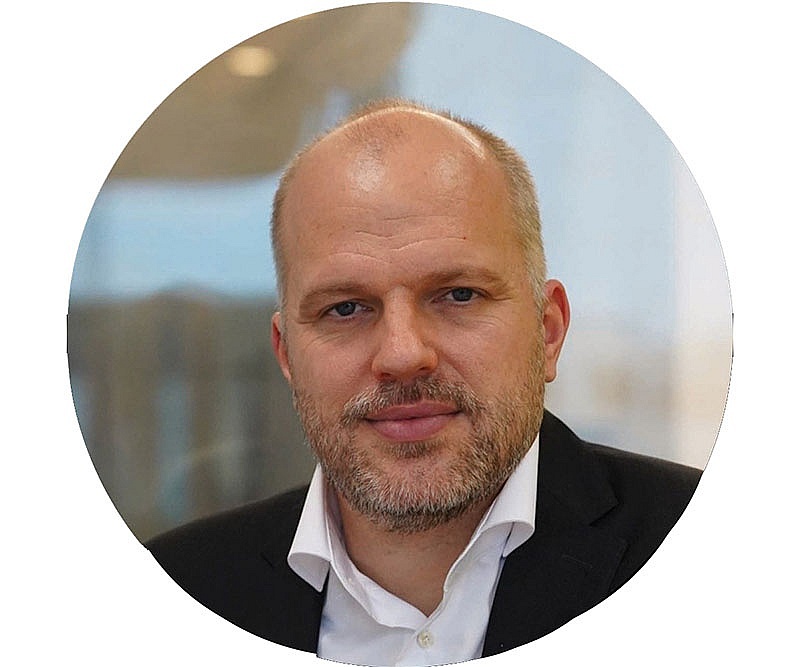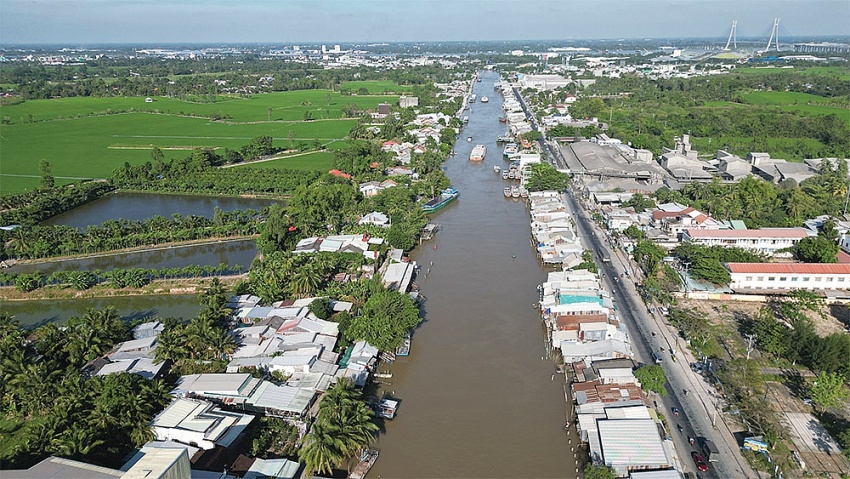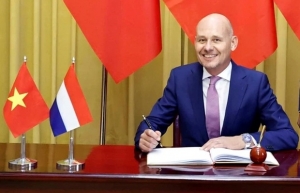Dutch on hand to help break the build, neglect, repair cycle
 |
| Willem Timmerman, first secretary for Climate and Water Affairs Dutch Embassy to Vietnam |
Ho Chi Minh City and the Mekong Delta are focal points of this enduring partnership, and prime candidates for the Dutch practice of “living with water”. This is based on not fighting water, and instead giving it space. The idea is that you cannot just push water away. We did that for hundreds of years, coming to the realisation that you need to embrace water and to make use of it.
Accordingly, water and climate change are not viewed as a threat alone, but also as an opportunity to make cities more resilient, more attractive, and economically stronger. Water management solutions must integrate systemic understanding and natural processes to work with nature and also the people.
Partner cities
Rotterdam, a city with many parallels to Ho Chi Minh City, is a prominent example of this approach. Since its founding, Rotterdam had to adapt to the natural circumstances of its location in a delta mostly below sea level. However, the city manages to keep flood risks under control.
Innovative solutions include parking lots, playgrounds, and basketball courts that double as retention areas to absorb heavy rainfall. Most of the year, these facilities are used by the public. When necessary, they act to prevent flooding elsewhere by reducing run-off and pressure on drainage systems.
The governments of Rotterdam and Ho Chi Minh City are cooperating under an MoU in response to climate change and flood management. Both cities are economic and transportation hubs on river deltas with increasing challenges from climate change. Ho Chi Minh City can benefit from the living with water philosophy, to leverage its waterfront situation and sustain growth while adapting to adverse conditions.
The partnership extends to port development on the river and urban resilience, the latter of which is best illustrated by dual-use water retention areas, innovation that can be applied at scale. A key aspect of successful projects like these is inclusion. All over the world we find better results when government involves the private sector, civil society, and knowledge institutions. Innovation is driven by the collaboration of these four pillars of society. This group of four is known as the “Dutch diamond” when it comes to ensuring inclusive planning and development.
Going beyond delta cooperation, there is an enormous need for innovative and sustainable water technology in Vietnam. For instance, breakthrough water innovation is at the heart of climate adaptation and fundamental for food security, biodiverse ecosystems, livable cities, and sustainable consumption and production. By investing in water use efficiency as well as water and wastewater management, the burden on scarce freshwater systems can be reduced, while improving access to equitable and safe water for all.
The construction of new infrastructure is often and understandably the first solution considered to address water challenges, but decision-makers worldwide frequently underestimate the needs and costs of long-term operation and maintenance. If you consider the operation and maintenance of an asset as a problem for later, it indeed does become a problem later, and cheap can become expensive.
We run the risk of building infrastructure that we then neglect, due to various reasons: for instance, from a lack of funds for operational costs, a lack of knowhow, or the lack of inclusivity. Neglect of infrastructure results in expensive repair costs or even more costly rebuilding expenses. A waste of money and resources that additionally slows down the green transition. In addition, critical infrastructure that is out of operation due to neglect also entails societal risks.
Vietnam is currently experiencing rapid growth, paired with major investments in its infrastructure. There is an enormous need for innovative and sustainable water technology. Therefore we need the private sector. They are the innovators with the technologies, knowledge, and expertise to address these challenges and to achieve a sustainable and green transition.
So while it is the government that decides the rules, especially when we talk about public infrastructure, it is the private sector that catalyses the demand-driven change. The Dutch private sector is ready to work together and tackle these challenges of today and tomorrow.
 |
| Breakthrough water innovation is a vital pillar for climate adaptation, photo Le Toan |
The Mekong Delta
The Dutch have been involved in the Mekong Delta for decades, and their work has evolved along with approaches to water back in the Netherlands. The ‘living with water’ policy dates back to the 1990s, when disastrous floods spurred a mindset shift through the 2000s.
That transition was challenging for a country that is used to pushing water out. It took quite some convincing, conversations, and inclusivity for people to get behind the idea of giving land back to the water, especially farmers who need to be compensated.
This context translates well to the Mekong Delta, which is critical to Vietnam’s agricultural production and the livelihoods of millions but faces existential long-term water-linked challenges.
There, as in the Netherlands, farmers and residents need to be consulted and listened to since they are most familiar with the local context. At the same time, everyone in the Dutch diamond must work together to find solutions that work in the ground-level reality.
Another crucial aspect of the Netherlands-Vietnam partnership in the delta is saltwater intrusion, an increasingly serious threat to agriculture and freshwater supplies due to a complex web of both internal and external factors. These include upstream hydropower development, sand mining and groundwater extraction within the delta, and rising sea levels exacerbated by climate change.
Under the Mekong Delta Master Plan of 2013, co-created by Vietnam and the Netherlands, the delta is divided into saltwater, brackish, and freshwater zones. Every zone has its specific adaptation challenges and requires close consultation with farmers who have been practicing agricultural methods passed down by generations.
This reality shows how addressing water-related challenges is not merely about applying technology. It is just much about social inclusion and providing alternative ways to make a living.
| In the context of the 50th anniversary of diplomatic relations and more than 400 years of people-to-people contact between Vietnam and the Netherlands, a large Dutch trade mission to Vietnam is taking place on March 18-21. The mission consists of 140 business entrepreneurs engaging in water tech and management, agrifood and horticulture, and green and digitalised logistics. During the mission, 30 business deals are expected to be signed. |
 | Royal visit underpins extension of investment ties Vietnam and the Netherlands have expanded their ties in agriculture, water management, and logistics in port and aviation development, coupled with fostering digital and semiconductor cooperation. |
What the stars mean:
★ Poor ★ ★ Promising ★★★ Good ★★★★ Very good ★★★★★ Exceptional
Related Contents
Latest News
More News
- Global partnerships key to Vietnam’s IFC development (December 26, 2025 | 16:18)
- Vingroup pulls out of bid to invest in North-South high-speed railway (December 26, 2025 | 11:42)
- Strengthening supply chains through trade promotions and customs reform (December 24, 2025 | 14:00)
- PM orders investment model for North–South high-speed rail (December 22, 2025 | 17:43)
- LS Eco Energy to invest in Vietnam rare earth sector (December 22, 2025 | 17:31)
- Government moves to establish International Financial Centre (December 21, 2025 | 21:00)
- Vietnam's IFC to target global investment flows (December 21, 2025 | 18:00)
- Two national hospitals expand capacity with new facilities (December 20, 2025 | 09:00)
- Ha Tinh breaks ground on major Vingroup industrial and energy projects (December 19, 2025 | 18:24)
- EVN launches major power infrastructure projects nationwide (December 19, 2025 | 18:17)

 Tag:
Tag:





















 Mobile Version
Mobile Version